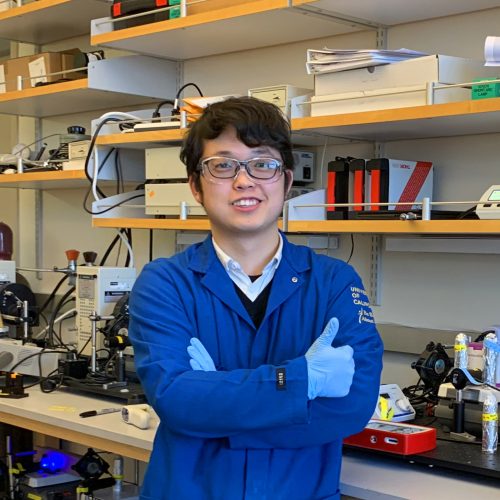
Pin Lyu
Assistant Professor of Physical ChemistryContact Information
- plyu@unca.edu
- 232-5171
- 106 Zeis Hall
Courses Taught
- CHEM 111: General Chemistry Laboratory
- CHEM 145: Quantitative Chem Laboratory
- CHEM 331: Foundations of Physical Chemistry
Education
- Ph.D. and M.S. University of California Merced, United States
- M.S. and B.S. Shanghai Normal University, China
About Me
I graduated from Shanghai Normal University, a comprehensive local university with salient features of teacher training and particular strength in liberal arts. Between my undergraduate and masters’ degrees, I spent a year serving as a volunteer teacher in Math and Physics at an underserved middle school in Yumen, China, where I found my passion for education. In the meantime, fascinating research involvement in the field of photocatalysis inspired me to explore more fundamental aspects of physical chemistry. When I moved to the University of California Merced for graduate school, I conducted more photocatalysis mechanism research with metallic nanoparticles in Dr.. Son Nguyen’s lab. I received my Ph.D. in physical chemistry in May 2023 and joined the Department of Chemistry and Biochemistry at UNC Asheville to start my independent career, devoted to research-inspired education.
Teaching Interests
Creating a diverse and engaged student-led and instructor-assisted class environment has always been my consistent practice throughout my teaching career. Understanding the students’ needs, approaching their own learning curves, and customizing the strategies for self-directed learning are among those core values that I believe will maximize students’ short-term knowledge-related outcomes and long-term impact on critical thinking.
Research Website
Lyu Lab-Make Every Photon Count! In the Lyu lab at UNC Asheville, our goal is to understand the fundamental mechanisms behind artificial photosynthesis and design better catalytic systems for converting solar energy to high-value chemicals. Specifically, we are interested in emerging affordable metallic nanoparticles (such as non-noble transition metals like Fe, Co, Ni, or semi-metals like Bi) for sustainable photocatalysis, starting from the solid-state physical interpretations of the metals (like band structure) and chemical kinetic analysis of model reactions for mechanistic study.